Seasonal foods for February and March
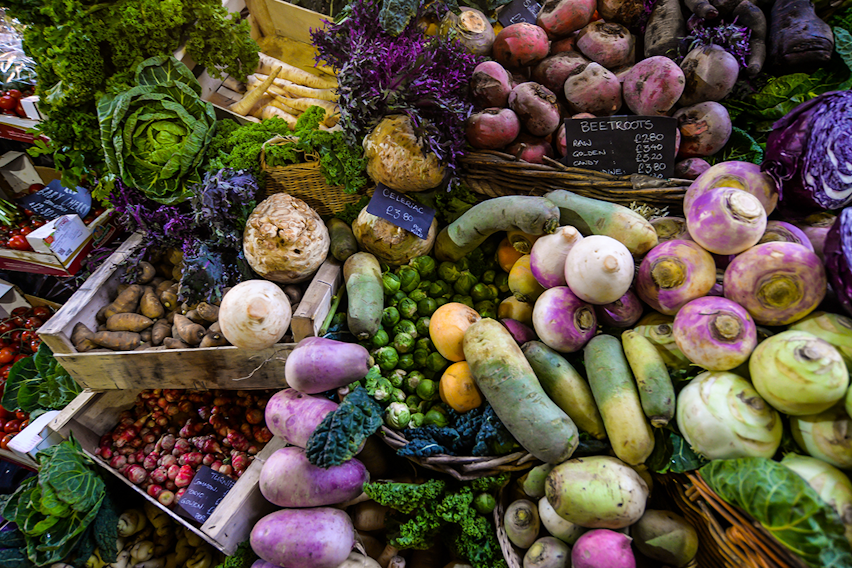
Winter weather can be cold and brutal, which might leave you thinking - what food is seasonal in February?
Well, actually there is plenty of produce - both meat and vegetable-based, that is best consumed this time of year. So read on for March seasonal food in the UK, February favourites and more...
Leeks
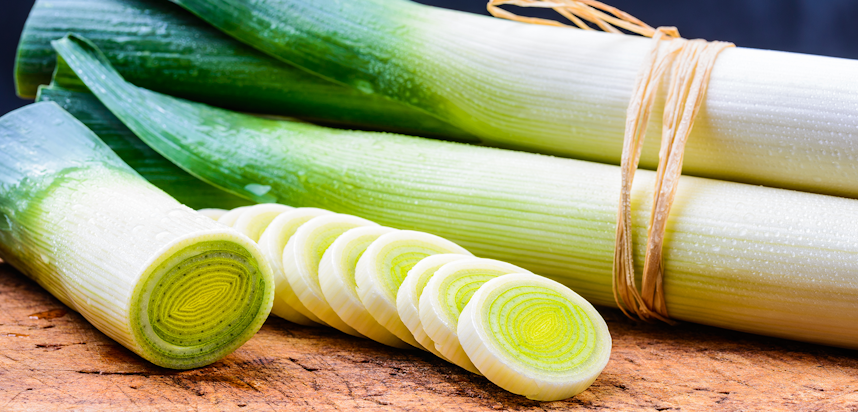
What are leeks?
Leeks are a vegetable, and part of the genus Allium family, which also contains onions, garlic and shallots.
Leeks consist of a bundle of leaf sheaths, the bottom of which in sometimes (inaccurately) referred to as the stalk. The bottom of the leek is the part that is edible. Leeks have a sweet flavour that is also reminiscent of onions, but milder. They are in season and at their best from the months of November through to April.
Menu ideas for leeks
Leeks can be used as a base ingredient in sauces, soups and stews to add depth of flavour, but they also can be great as a side dish - seasoned with soy sauce, spices and sesame oil and fried in butter and served alongside meat dishes or pasta.
Leeks can also add flavour and sweetness to a risotto bianco, and vegans will appreciate a leek and potato soup with plenty of body. Leeks make an excellent pairing with chicken as a pie filling, as they don’t overpower the chicken but add flavour to the gravy.
Top tip!
Leeks can very easily turn to mush if cooked the wrong way - avoid this you should avoid browning them before the final stage of the cooking process, and always keep an eye on them as you do cook them to make sure you can remove them from the heat the minute they are tender.
Wild garlic
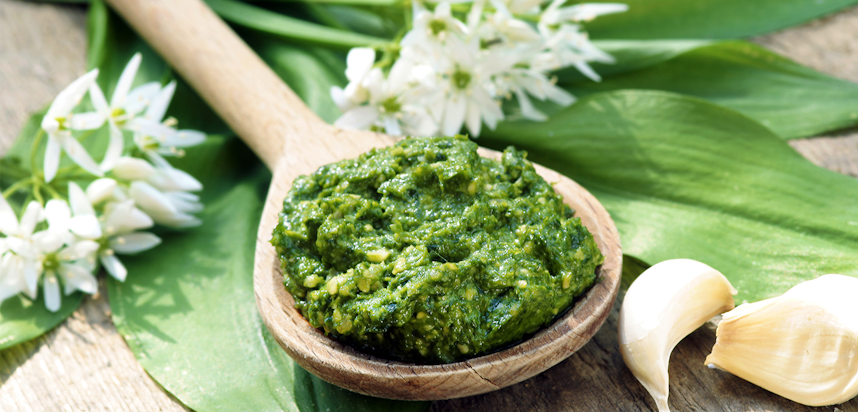
What is wild garlic?
Wild garlic is a wild plant with edible buds, flowers, seeds and bulbs, and has the same flavour and smell as regular garlic cloves - though it is not as strong or pungent. It has one of the longest seasons of all wild plants, and is good to eat from around mid-February, reaching it’s peak in mid-March.
Menu ideas for wild garlic
You can combine minced garlic with breadcrumbs, minced pork, herbs, spices and egg to make stuffing that can accompany roasted meat.
You can also use garlic to flavour mayonnaise for a subtle take on aioli, mix it with parmesan, pine nuts and oil for a delicious pesto sauce and to use as a crust on fish like baked salmon.
Country of origin is one of the hundreds of specifications you can see for products listed on Erudus, so you can check if the products you're using have been sourced from the UK.
Top tip!
Embrace the versatility of wild garlic - add wild garlic seeds or leaves directly to salads, or chop the stems up the same way you would chives. If you have a big bunch, the leaves can even be wilted and cooked like spinach.
Partridge
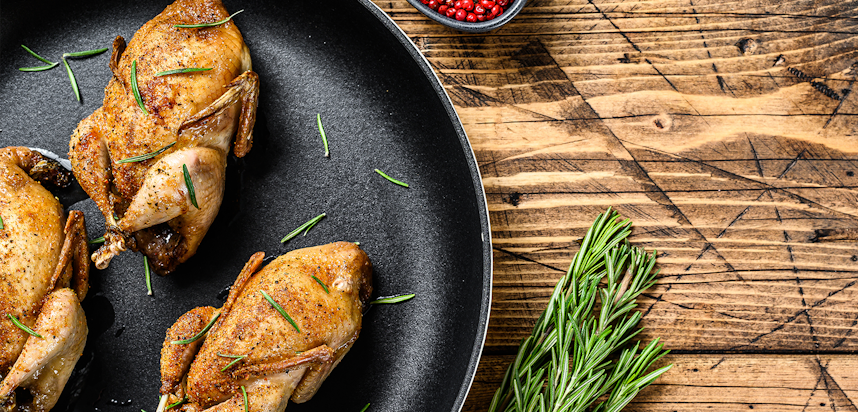
What is partridge?
Partridge is a small, pale fleshed bird similar to a chicken. It is considered game, and is native to Europe, parts of Asia and Africa. Though a ‘game’ bird, it has a delicate and subtle flavour, and generally lower in saturated fat due to being a wild meat.
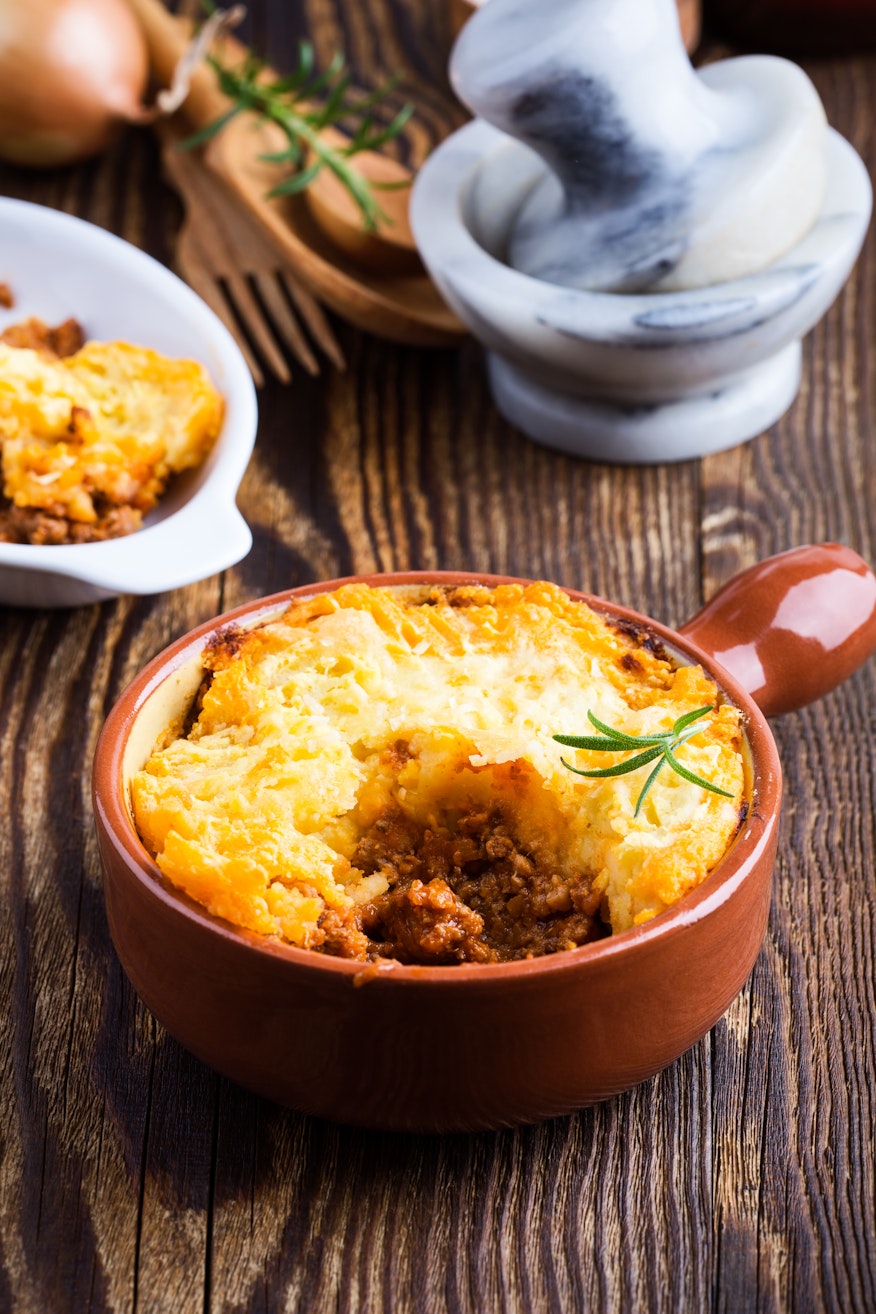
Menu ideas for partridge
Partridge is a surprisingly versatile meat, and can be served simply roasted in olive oil with seasonal vegetables, or glazed with something more flavourful such as honey and black pepper.
It also pairs excellently with bacon - stuff the bird with herbs and butter and cover with bacon to roast and serve with cider gravy.
Game pie is another good choice for partridge - though unlike a traditional pie this involves stewing the meat with vegetables and gravy, and topped with mashed potatoes.
Top tip!
Partridge, like other game birds, is small and cooks faster than other poultry - meaning it dries out easier in the cooking process.
Avoid this by covering your partridge in bacon while cooking so that the pork fat keeps the bird moist, or brining it before cooking.
Forced rhubarb
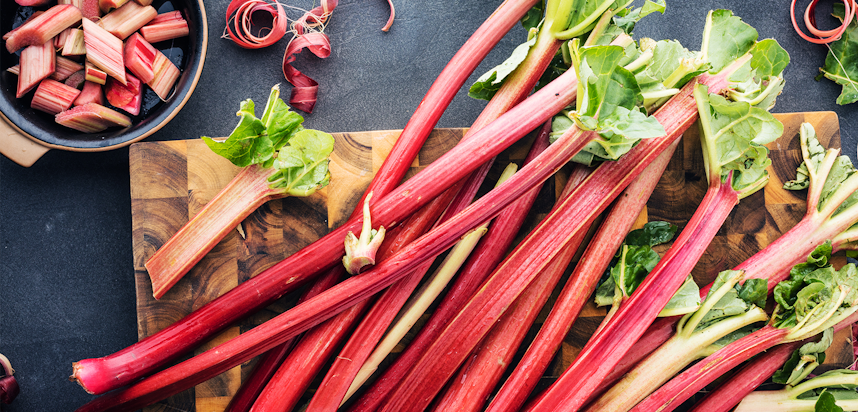
What is forced rhubarb?
Forced rhubarb is a type of rhubarb grown out of season. This is achieved by preventing light from reaching the crowns of the plant and toughening the roots by exposing them to frost, triggering a paler, less sweet stalk than that of regular rhubarb.
The characteristic sourness of rhubarb is present in forced rhubarb, but it is more subtle.
Menu ideas for forced rhubarb
The sweet meets sour flavour of forced rhubarb makes it ideal for many things, including as a gin infusion. It is a great dessert ingredient and can be used to make a rhubarb and ginger cake, as well as the traditional pairing with custard to make a rhubarb and custard tart.
Top tip!
As an ingredient, forced rhubarb wilts quickly and so should be eaten within a couple of days of purchase or picking, and refrigerated until used. The leaves should also be kept intact till the last possible minute for optimum freshness.
What are other seasonal foods for the UK in February and March?
Some other foods in season this time of year include:
- Artichoke
- Beetroot
- Brussel sprouts
- Cauliflower
- Celeriac
- Jerusalem artichokes
- Kale
- Mushrooms
- Radishes
- Red Cabbage
- Salsify
- Spring Onions
- Squash
- Swedes
- White Cabbage
Purple sprouting broccoli
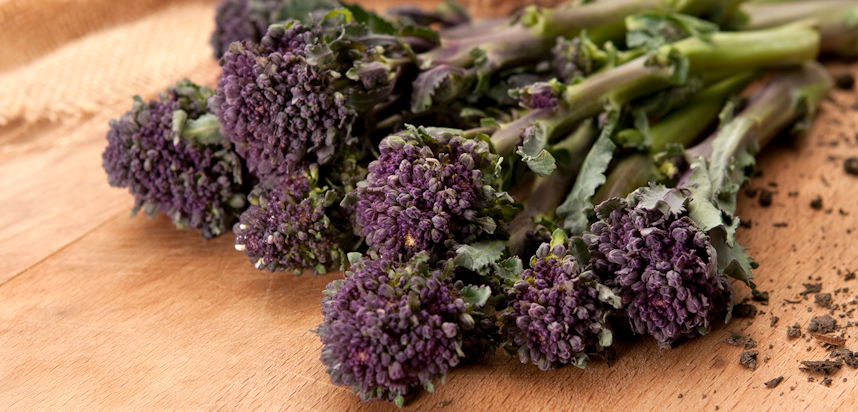
What is purple sprouting broccoli?
Purple sprouting broccoli is a vegetable that is part of the cabbage family. It is similar to tenderstem broccoli, composed of florets with long stalks, but it has a distinctive purple colour and a subtle sweetness and nutty flavour combined with the traditional bitterness of broccoli.
Purple sprouting broccoli is thought to contain more antioxidants than regular broccoli, and it is harvested in the UK between January and May, thriving in a heavy, alkaline soil.
Menu ideas for purple sprouting broccoli
Purple sprouting broccoli makes an excellent side dish when par-boiled then roasted in the oven with spices like cumin.
You can also use it with ingredients such as almonds and feta to make a beautiful salad, and alongside kale to make a gratin that those on a plant-based diet will love.
Top tip!
Use salt to par-boil your purple sprouting broccoli - one tablespoon to each large pot, then cook the broccoli in it for around 2 minutes. Afterwards plunge into ice water to stop the broccoli over-cooking.
Savoy cabbage
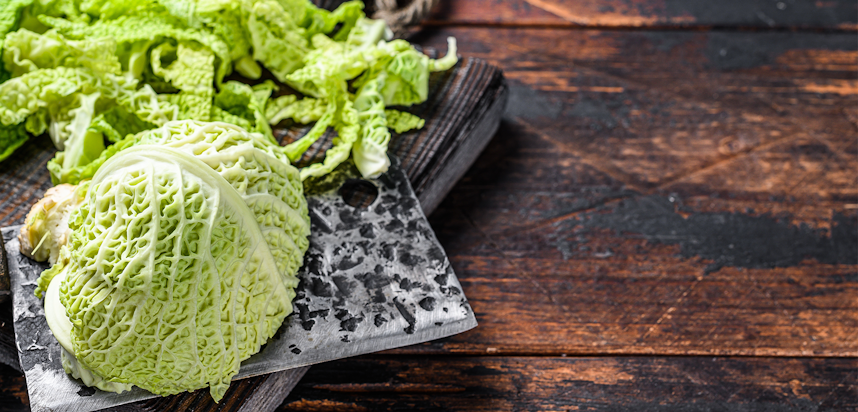
What is Savoy cabbage?
Savoy cabbage is variety of ‘Brassica oleracea’, and a particularly hardy, winter cabbage that grows well in poor soil. It is named for the ‘Savoy’ historical Alps region, and has crinkled green leaves and a milder, sweeter flavour than most cabbages. It is slightly peppery and low in calories - as well as being an excellent source of fibre.
Menu ideas for Savoy cabbage
Savoy cabbage has a mild flavour that tastes great paired with ingredients such as bacon and onions, then fried in oil or butter.
It also is a great way to thicken stir-fries, used alongside foods like garlic, fennel, egg noodles and meats such as beef or chicken.
Savoy cabbage also makes a great side dish to roast duck.
Top tip!
It’s important to note when cooking Savoy cabbage that the outside leaves take longer to cook than the inside leaves, so it’s best to pull the cabbage apart, and cook the outside leaves first, adding the inside leaves as needed.
Mussels
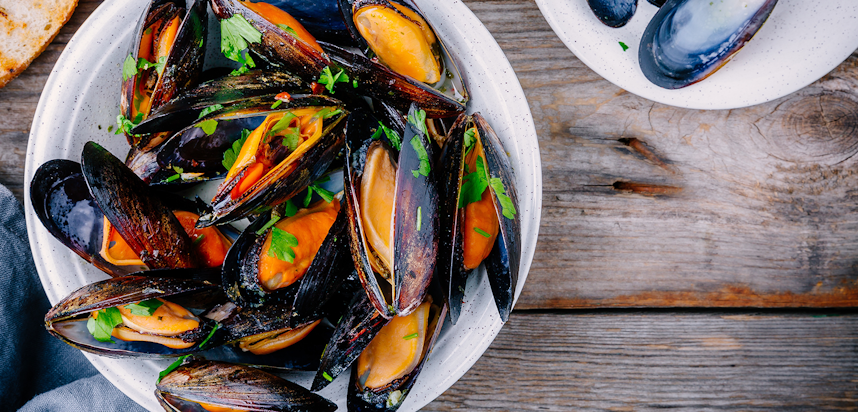
What are mussels?
Mussels are a type of Mollusc - a seafood with a protective shell (in the case of mussels a shiny black-grey shell) and yellow or orange edible ‘meat’ inside.
It is arguable whether mussels have a ‘fishy’ taste - most people consider them less fishy than clams or oysters, though some people describe them as fishy and salty. There are also people who liken their flavour to that of mushrooms. Peak season for mussels in the UK is between October and March.
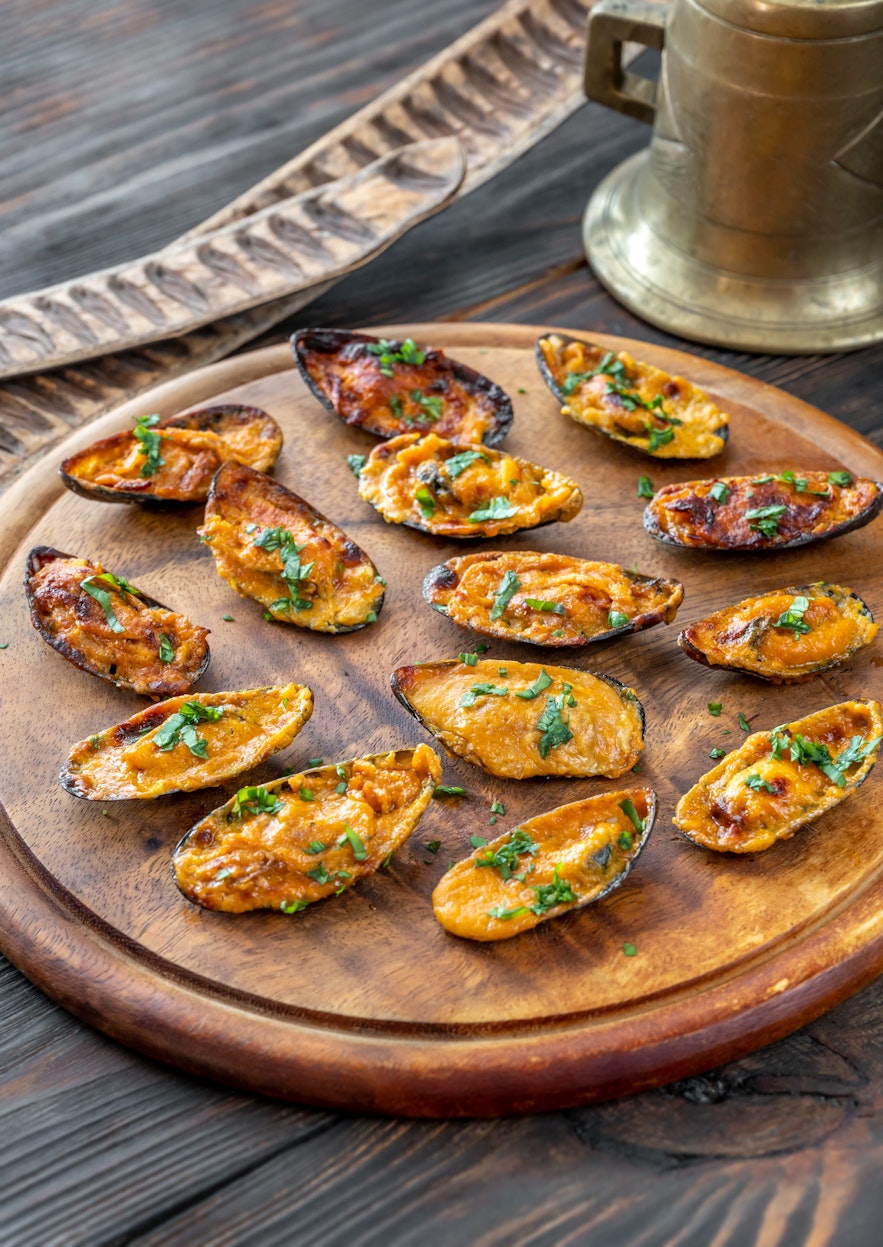
Menu ideas for mussels
Mussels are usually steamed in their shells via a boiling pot of water, and flavoured with spices such as paprika or turmeric.
Many seafood and fine dining establishments serve mussels in a white wine broth, or sauce made of tomatoes and spices and chillis.
You can also eat mussels stuffed with chopped nuts, garlic, herbs and parmesan cheese.
Top tip!
You should use the widest or largest pot you have available to cook mussels in, as it is the most effective way for the steam or cooking liquid to reach the mussel and the best way to avoid over or under-cooking. Be sure to shakes the pan every so often.
Allergy alert
Mussels are a Mollusc - one of the 14 major food allergens.
Chicory
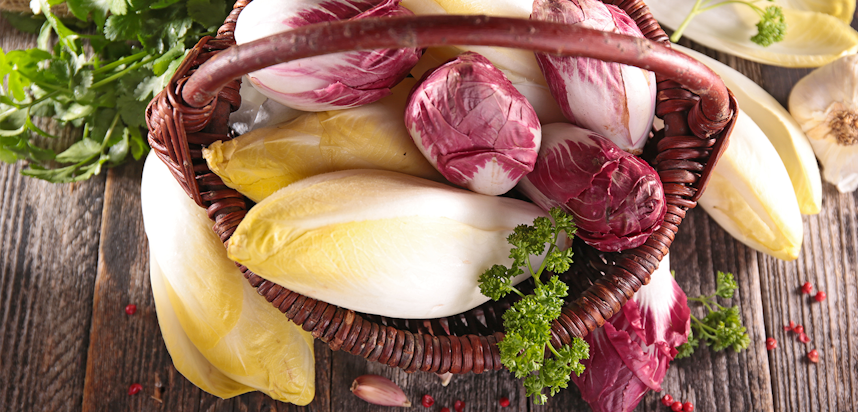
What is chicory?
Chicory is a forced crop that grows in darkness. It has a thin, tubular shape and yellow-tipped leaves. It can be grown all year round but in England the chicory season runs between January and March. Chicory has a mildly woody and bitter flavour that has been compared to coffee.
Menu ideas for chicory
Chicory makes for an excellent ingredient to give salads bite, and it pairs excellently with salad staples like leafy greens, blue cheese and vinaigrette. You can also chop and mix chicory with vegetables such as courgette, marrow and squash before sautéing in butter to make a rich side dish.
Wrap sliced chicory in ham or prosciutto with butter, and roast to make a tasty snack, canape or appetiser.
Top tip!
Some people find chicory too bitter, but this can be tempered down by blanching it in hot water before cooking. You can also add sugar or salt to the blanching water to intensify this.
You may also be interested in…


You may also be interested in…
Elevated Easter Foods For Your Menu
ReadYou may also be interested in…


You may also be interested in…




